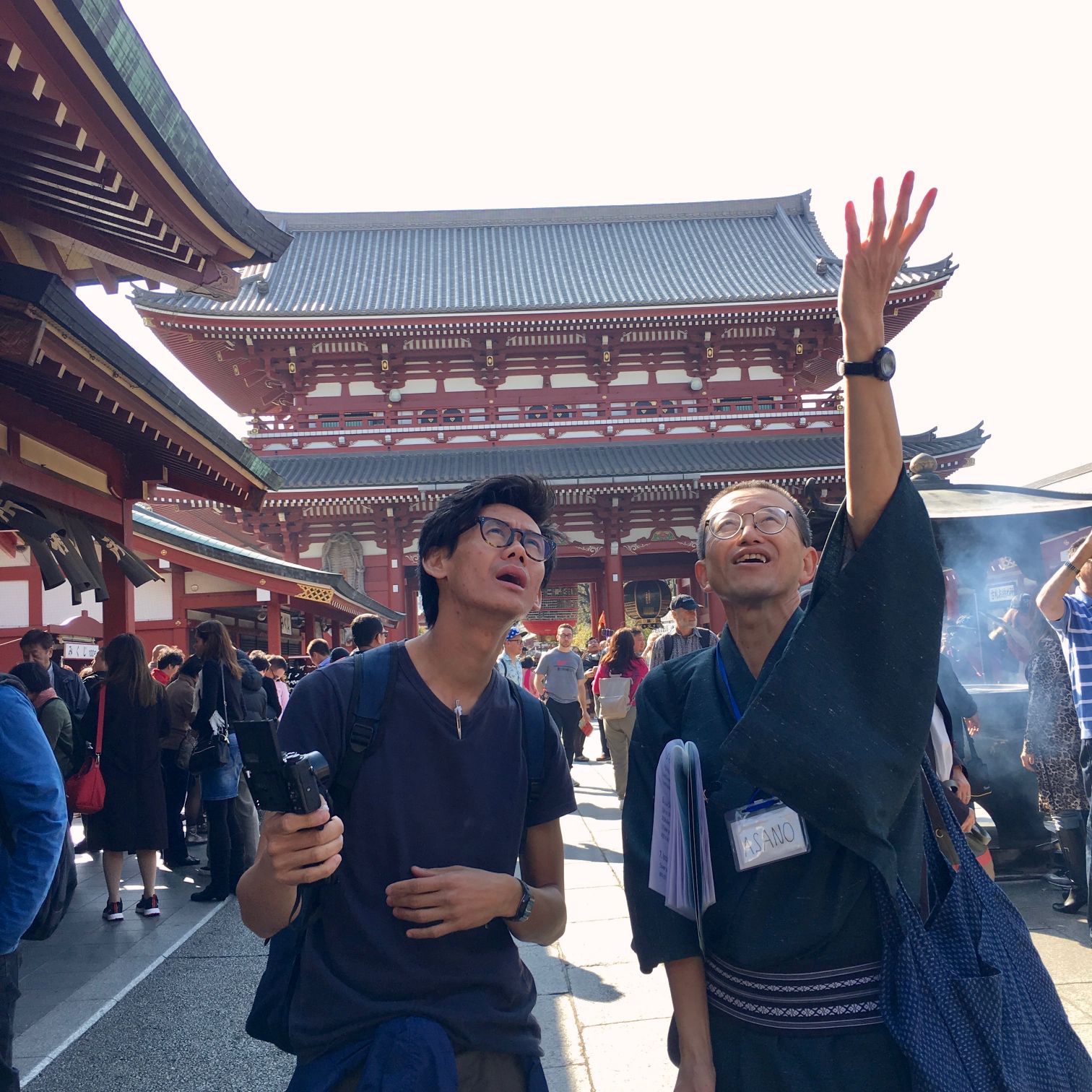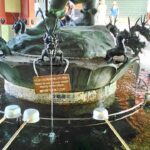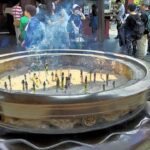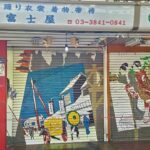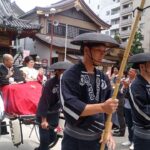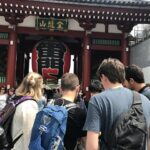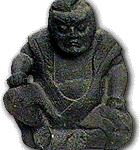Thank you for coming Asakusa areas.
We welcomed around 20 guests on that day and briefly introduced ourselves. Right after that, we start our tour with climbing the roof top of Asakusa Tourist Information Center, where we enjoyed seeing the breathtaking views of these historical areas.
Normally, we visit seven spots in this Asakusa strolling and conclude at Asakusa Shinto Shrine.
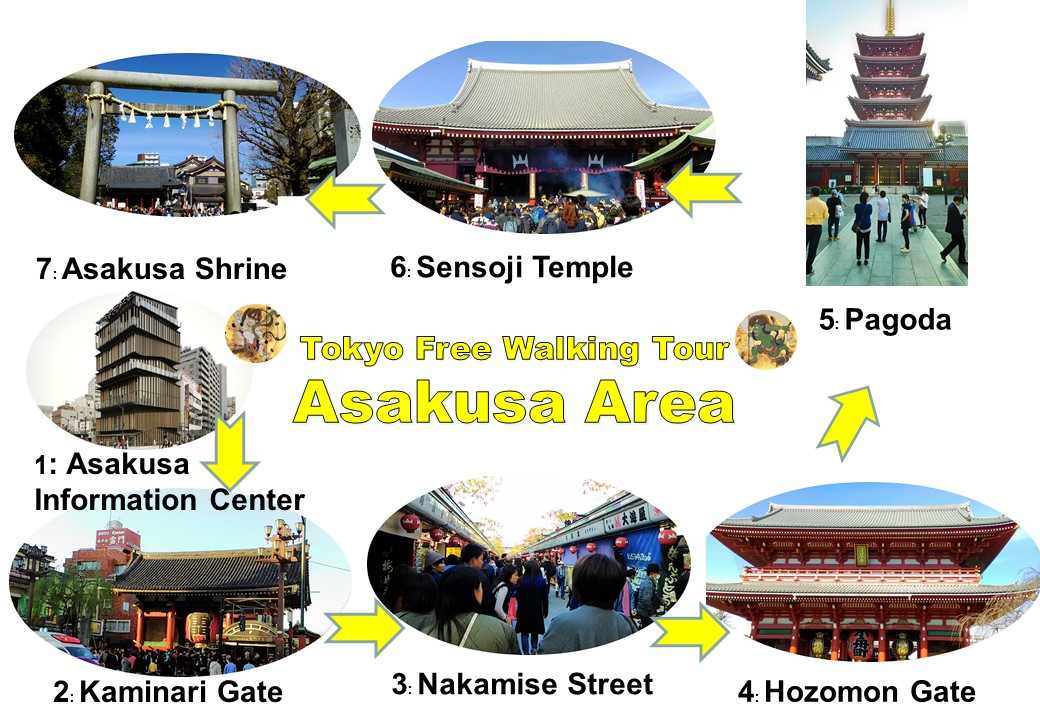
We hope we can have a number of Asakusa tourists as well as the East Gardens of the Imperial Palace.

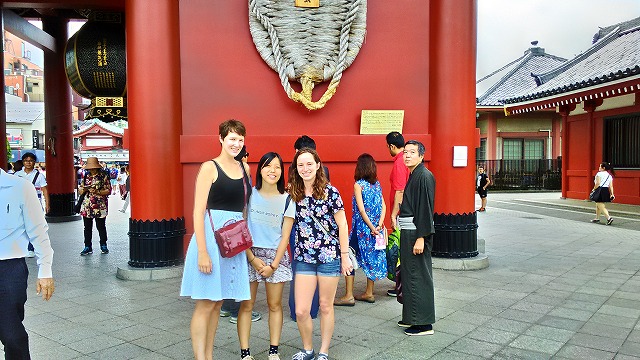
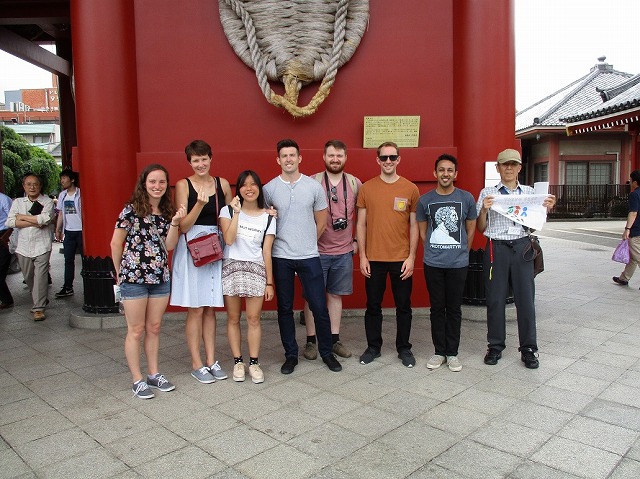

Are you looking for serene and historical sites in Asakusa? You can visit Sensoji Buddhist Temple, Asakusa Shinto Shrine or Kaminari Gate. These are certainly beautiful and appealing places but would you like to visit a hidden place? I think the Kumeno-Heinai Do will interest you.
This is an amazing and fascinating spot in Asakusa.
“Kumeno-Heinai” was a samurai in the early Edo period, at around 17th century.
On the other hand, “Do” means a tiny temple.

This small memorial building enshrines this samurai’s statue and there are many stories about him.
One of the most popular stories about the samurai is the legend that Heinai was a great sword master and he was able to kill many people over the years.
Later in his life, it was said that he lived in peace in a Buddhist Temple, where he devoted his life to religious services as a way of lamenting and honoring the souls of the people he killed.
This was because he was fiercely repenting the misdeeds that he committed.
Moreover, it is said that just before he passed away, he ordered his followers to carve a figure of him on a stone and to bury it on a busy street in the temple’s compound, so that the visitors of the temple would “step on” his statue.
He did this because he was hoping that the sins he committed in his life would be expiated.
Afterwards, the stone statue was eventually dug up, restored and placed in this small and humble temple.
Aside from his very colorful past, there is an additional episode to this spot.
Do you believe that the samurai Kumeno-Heinan is also considered as the God of Marriage?
The word ” step on ” can be translated to “fumu” in Japanese language and the pronunciation of the word is close to the word “fumi” which means letter.
The word “fumi” is often associated with love letters, especially by young women. This is a play on words between “fumu” and “fumi”, thus, resulting to Kumeno-Heinan to be considered as the God of Marriage. This location is also considered as a pilgrimage site on the way to visiting the Sensoji Buddhist Temple in Asakusa.
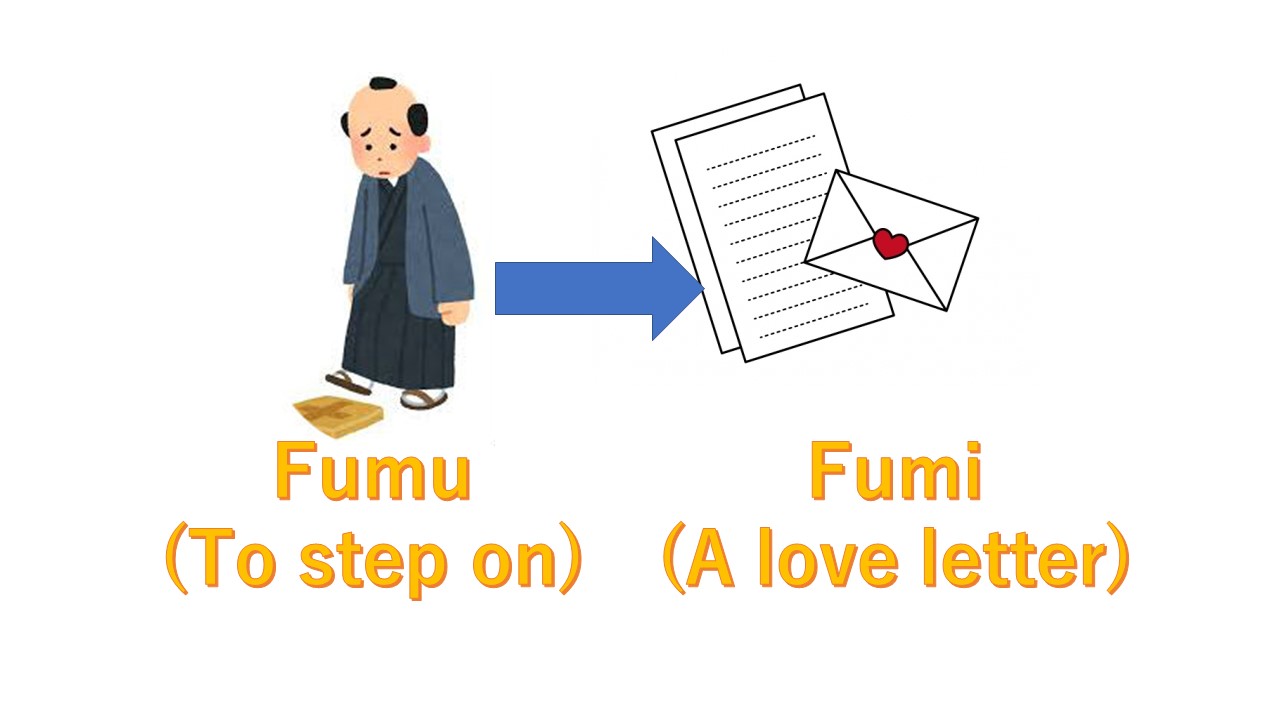
It is extremely ironic that a once-fearful samurai’s symbol lures the Japanese female’s interests, though, it’s uniqueness might be a great help for you to meet your ideal partner.
Good luck!
(By Arac)

